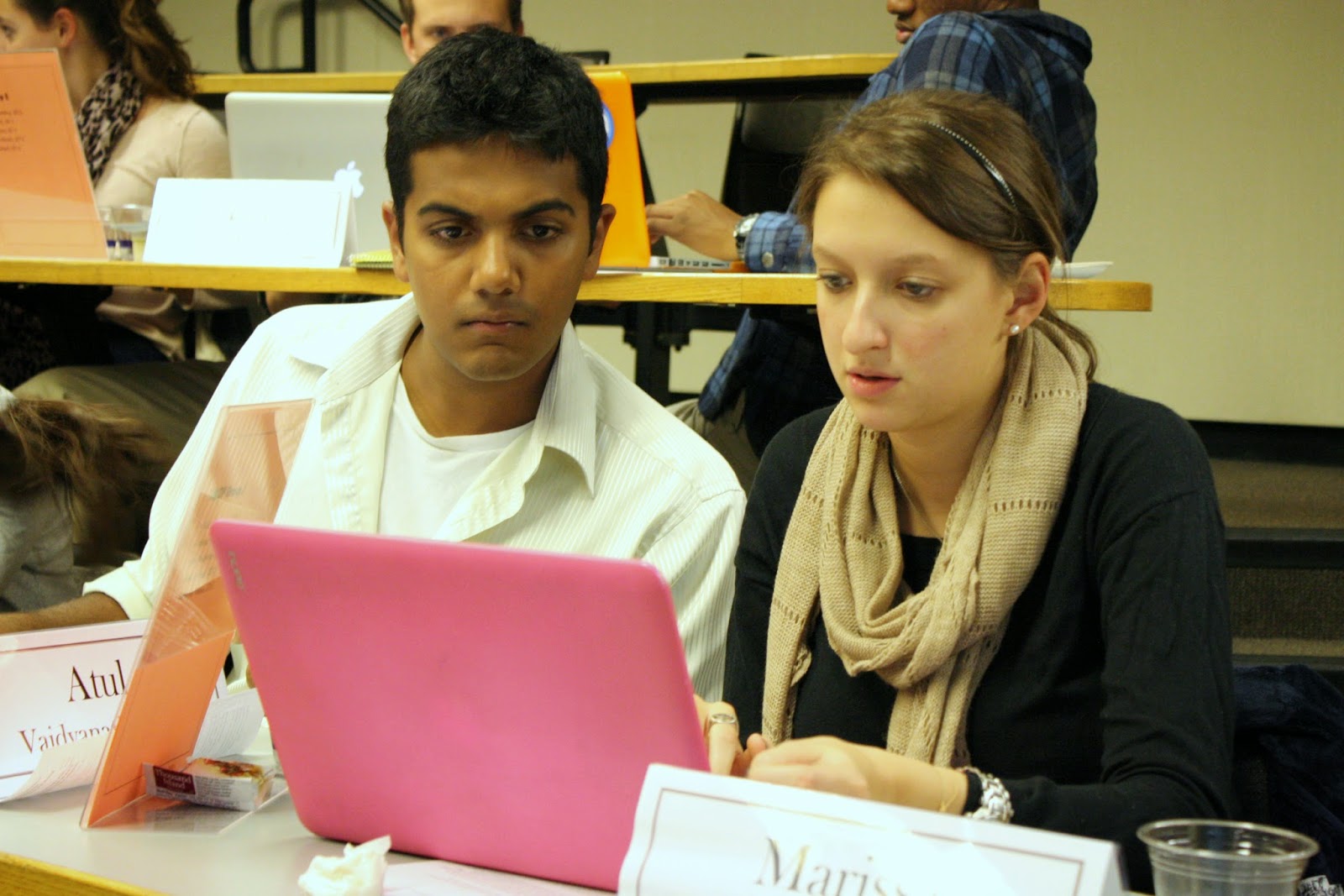- Public Policy
- Leadership
- Funding
- News & Events
- About the Center
Back to Top Nav
Back to Top Nav
Back to Top Nav
Back to Top Nav
This ongoing series explores sessions of the Management and Leadership Development Program (MLDP) through participant narratives. MLDP is a one-term program designed to develop citizen leaders among sophomores, juniors, and seniors at Dartmouth College. Led by expert guest speakers each week, sessions employ experiential teaching techniques to engage students through hands-on learning of core management and leadership skills.
 |
| MLDP participants working together to come up with "good writing"
|
This, the second essential session of spring term, was directed by Julie Kalish. Kalish is a Vermont attorney and lecturer in both Dartmouth's Institute for Writing and Rhetoric and Vermont Law School's Legal Writing Department. Kalish first asked students if they had had to do writing assignments in leave-term or summer jobs, what kinds of writing were they assigned, and did they find it difficult transitioning from their Dartmouth student writing assignments. The workplace requires much different writing from college papers and student/professor communications. The workplace audience is broader and can include colleagues, superiors, clients, and even a larger publication readership. Kalish stated three universals of good writing: clarity, concision, correctness. Clarity is about characters and actions; to go along with that, Kalish suggested using active verbs rather than longer, flowery noun phrases. Concision is important because the workplace audience is busy and doesn’t have time to read overly wordy documents or to hunt for the basic information in a document. Wordiness requires interpretation; on the other hand, one shouldn’t pare down writing to the point of leaving out important or key information. Correctness
means not only accuracy of grammar, word choice, syntax, spelling, citing sources, but also cultural sensitivity, proper address, and workplace values. Because of the prevalence of email in workplace communications, Kalish discussed email considerations: 1) informative subject line, 2) recipients (Direct? CCd? BCCd?), 3) internal structuring /formatting techniques, 4) social conventions (salutatations, familiarities, introductions, and conclusions), and 5) signature lines. Kalish then had participants work in small groups on hypothetical situations, most based on actual work scenarios. Each group was given a problem that required a written reply; the group conferred, decided on a solution, and composed an email response, considering personnel, the institution, and how and to whom to respond. After 20 minutes or so, Kalish asked for a few groups to share their hypothetical situation and their solution/response, saying what factors they considered in responding as they did, then asked the entire group for comments about the solutions. The solutions were creative, thoughtful, and earned praise for their workability. Participants, who had been animatedly and fully involved in the session, left commenting on how adept Kalish had been in keeping them engaged and how immediately useful the session would be.